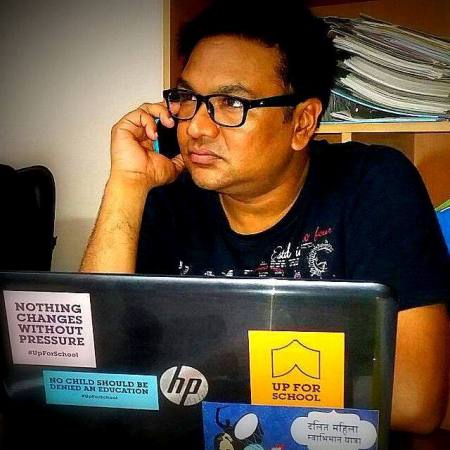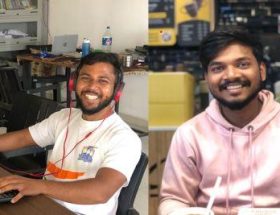Wesly Kumar
 Even though the Dalits form one fourth of India’s total population they are still in the lower strata in Indian society. The caste sentiments are still rising in the land where Ambedkar relentlessly strived for the abolition of the caste system. We now have instances of discrimination in higher educational institutions. Being temples of learning, the universities should inculcate in the minds of faculty and students that people should protect and defend the dignity of each individual through respect for human rights and the rule of law.
Even though the Dalits form one fourth of India’s total population they are still in the lower strata in Indian society. The caste sentiments are still rising in the land where Ambedkar relentlessly strived for the abolition of the caste system. We now have instances of discrimination in higher educational institutions. Being temples of learning, the universities should inculcate in the minds of faculty and students that people should protect and defend the dignity of each individual through respect for human rights and the rule of law.
Individual and collective violence against Dalits is on the rise, according to reports of the National Crime Records Bureau (NCRB). A crime is committed against a Dalit by a non-Dalit every 16 minutes. At least four Dalit women are raped by non-Dalits every day. Thirteen Dalits are murdered and six Dalits are kidnapped every week. In 2012 alone, 1,574 Dalit women were raped and 651 Dalits were murdered. Other offences against Dalits include rape and butchery, stripping of women and parading them naked, forcing them to eat human feces, seizing of their land, social boycott, denying access to drinking water etc. All the cases that take place are not reported to the police; the reported ones are not always recorded.
In India, for Dalits, higher education and employment are still a distant dream, since there is high level of school dropout, lack of access, denial of opportunities and also social exclusion. The students of Dalit background depend on the benefits of the reservations policy. The students who come through the reservations are seen as less intelligent by upper caste students who object to the meddling with the merit of higher educational institutions. The opponents of the reservations feel that the entry of Dalit students will drop the academic standards of the institution.
The lives of Dalits are defined by economic poverty and social exclusion. In recent years, the Dalit students’ suicides have exposed the caste discrimination in higher education institutions. There have been 23 deaths of students from Dalit background throughout India. Even though the universities should stand as centers of excellence and social transformation, they are instead perpetuating social segregation and caste-based discrimination. Often students from a Dalit background who secure university places come through the national reservation system and end up living a stigmatised life. In the higher educational institutions, education has become a disciplining enterprise working against Dalit students. They are constantly under threat of rustication, expulsion, defamation, and discontinuation.
The reservation policy has had little effect on the empowerment of Dalits through the national educational system due to prevailing discriminatory caste practices. The universities are still a preserve of upper caste communities. Certain sections of Indian society tried to underplay the significance of suicides revealing the dark side of caste prejudice. Caste discrimination is omnipresent, earlier it was very overt, now it is invisible but still omnipresent. But the admission into educational institutions makes reserved category, a de facto identity for lower caste students, while the upper-caste identity is subdued and referred to in secular terms as general category.
Dalit students face discrimination from the very beginning of their educational journey. At the university level, discrimination is not as blatant as in primary schools. But it nevertheless occurs on a daily basis. Only 4 per cent of them are fighting against a system that seems to be structured against them .
The students from Dalit communities striving to break into the competitive educational system, are squeezed out through violent caste discrimination and the caste prejudice is pushing some of the most exploited to take their own lives. But the tenacity and resilience of Dalit communities cannot be underestimated. There couldn’t be a more opportune time to realise the message of visionary Dalit leader Ambedkar, who called upon Dalits to educate, agitate and organise. In a society where students have waged massive struggles to ensure their right to access higher educational institutions through the protective, enabling concept of the reservation policy, no one has dared to shed light on how many of these students are allowed to leave these institutions with degrees, how many become dropouts, become permanent victims of depression, how many end up dead.
However, the Dalit student movement in the University of Hyderabad has, over the years, created a substantive space for political articulation of issues of caste and discrimination. This is an achievement. Educated Dalit students cannot tolerate for much longer that their value is reduced to their immediate identity. Anyone who questions discrimination or rebels gets boycotted by the teachers and the administration; the students’ do not get proper attention from the guide or supervisor. There are instances of giving low grades to Dalit students. This is the fight for rights for intellectual equality, and that is where everything becomes controversial or problematic for upper castes. In this connection it can be observed that all the universities are in a phase of transition where Dalit and backward classes are becoming more and more visible and assertive purely on the basis of intellect. In fact, it is the intellectual power of students from Dalit and other marginalised communities that gives support to Dalit teaching and non-teaching staff who, due to personal and family reasons, do not protest and continue to suffer at the hands of upper caste administration.
Suicides among Dalit students here is not a new phenomenon. As many as 12 Dalit students have ended their lives in the University of Hyderabad, largely due to caste prejudices. This problem, however, has assumed alarming proportions in recent years. The Dalit students are targeted for suspension from the university hostel and are allegedly subjected to a ‘social boycott’ of sorts. For instance, Senthil Kumar, who hailed from Tamil Nadu and belonged to a poor family of ‘Panniyandi’ sub-caste of the Dalits, known for pig-rearing, committed suicide in 2008 while he was pursuing PhD in physics as he was denied a supervisor to complete his research. During 2013 two Dalit students committed suicide. Madari Venkatesh, a third year PhD scholar and Pulyala Raju took the extreme step after they fell victim to caste discrimination.
The committees constituted also highlighted glaring instances of insensitivity and lack of due diligence, especially towards students from marginalized sections of society. And suggested the university show greater alacrity in setting up and adequately monitoring the mechanisms for making the campus a more inclusive and rewarding experience for its students. It is alleged that discrimination against students from marginalised sections of society was one of the main reasons for the drastic step. Unfortunately, none of the recommendations were ever implemented. No government or university administration has taken any initiative to implement the recommendations of the Thorat Committee constituted long ago to look into suicides by Dalit students and had documented systemic discrimination that students from marginalised backgrounds who experience a strong sense of alienation and disaffection within the university.
The responses of university administrations to instances of suicides by Dalit students are: pathologize the individuals and blame their personal shortcomings. A typical response has been to psycho-analyze the issue and provide for a psychiatrist on campus, thus demonstrating a reluctance to acknowledge the social basis of caste-based aggression and violence. It is important to realise the character of India’s educational institutions as natural extensions of a violent casteist culture. It is evident from the information available from all the news sources, that political pressure played a role in the decisions of the universities. It is also evident that there is a role of the political rival student group/s and other eminent politicians in the whole affair/s. The entire sequence of events involving all these agencies are deeply disturbing and raise serious concerns on the autonomy of educational institutions. It is very important for the universities to allow Dalit students to feel free to voice their views and concerns using democratic means and foster healthy debates on all issues of the society.
From this context arises the entire discourse of naturalising Dalit suicides by blaming the reservation policy and the students themselves for their inability to cope with the pressure of a premier institution. But the truth is: a large number of students who take their lives have good academic achievements, and it is their claim to equal treatment that upsets the academic establishment. The circumstances that drove them to take their lives must make us pause and take cognisance of the violence implicit in India’s educational setup.
~~~
Wesly Kumar Vipparthi is working as an Asst. Registrar at University of Hyderabad and is also pursuing PhD simultaneously from the same university under the supervision of Prof. N. Sudhakar Rao and Dr. Sripathi Ramudu in the area of social exclusion, education and Dalits. He worked on discrimination against dalits in educational institutions, during his M.Phil.










